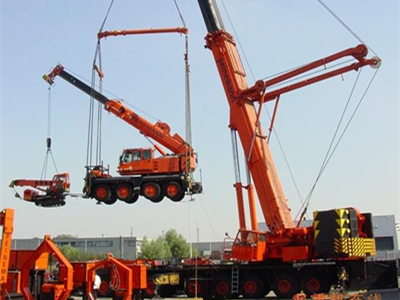With the development of China's economic and technological level, China has gradually become a major player in the international community. In recent years, China’s large-scale infrastructure and equipment construction, energy industry, real estate industry, and petrochemical industry have all developed by leaps and bounds, driving the development of China’s crane crane industry, such as Sany Heavy Industry, Zoomlion Heavy Industry, and Xuzhou Heavy Industry. Shanghai Zhenhua, Dalian Heavy Industry, Taiyuan Heavy Industry, etc. At the same time, it also expressed our country’s strength in these areas.

Lifting crane belongs to the branch of the lifting machinery industry and is used to transport and hoist all kinds of transportation machinery and equipment. Work cycle description: First, the lifting device lifts the object to be lifted from the ground first, rotates the object horizontally, transfers it to the designated place steadily, then slowly lands the object on the ground, and then performs reverse operation to make the device hang. The rod returns to its original position and the next cycle is performed. During work, it is necessary to pay attention to the first lifting of heavy objects. After 0.5 m from the ground, the heavy objects shall be put down again, and the performance of the parts and components shall be inspected, and after confirmation, the work shall be carried out. When operating, follow the specified command signal. If there is a sudden power outage during work, be careful to put all the controller handles in the “zero†position and re-check whether the crane is working properly before restarting work. When a crane is in normal operation, the act of braking and stopping by driving a counter-vehicle is expressly forbidden. The crane with two hooks should pay attention to when the main and auxiliary hooks are replaced, and when the heights of the two hooks are at a level, in order to avoid collision between the two hooks, the main and auxiliary hooks must be separately operated. The lifting mechanism brake cannot be adjusted under load. If any unusual phenomenon is found, immediately stop the operation, find out the reason, and continue working after the failure. After the work is over, the hook of the crane should be raised to a certain height. After the handle of the controller is classified as the “zero†position, the power supply is cut off. Usually pay attention to lifting crane maintenance work.
Â
"Gravity Die Casting. A permanent mould casting process, where the molten metal is poured from a vessle of ladle into the mould, and cavity fills with no force other than gravity, in a similar manner to the production of sand castings, although filling cn be controlled by tilting the die."
Gravity Die Casting
Sometimes referred to as Permanent Mould, GDC is a repeatable casting process used for non-ferrous alloy parts, typically aluminium, Zinc and Copper Base alloys.
The process differs from HPDC in that Gravity- rather than high pressure- is used to fill the mould with the liquid alloy.
GDC is suited to medium to high volumes products and typically parts are of a heavier sections than HPDC, but thinner sections than sand casting.
There are three key stages in the process.
- The heated mould [Die or Tool] is coated with a die release agent. The release agent spray also has a secondary function in that it aids cooling of the mould face after the previous part has been removed from the die.
- Molten metal is poured into channels in the tool to allow the material to fill all the extremities of the mould cavity. The metal is either hand poured using steel ladles or dosed using mechanical methods. Typically, there is a mould [down sprue" that allows the alloy to enter the mould cavity from the lower part of the die, reducing the formation of turbulence and subsequent porosity and inclusions in the finished part.
- Once the part has cooled sufficiently, the die is opened, either manually or utilising mechanical methods.
Advantages
- Good dimensional accuracy
- Smoother cast surface finish than sand casting
- Improved mechanical properties compared to sand casting
- Thinner walls can be cast compared to sand casting
- Reverse draft internal pockets and forms can be cast in using preformed sand core inserts
- Steel pins and inserts can be cast in to the part
- Faster production times compared to other processes.
- Once the tolling is proven, the product quality is very repeatable.
- Outsourced Tooling setup costs can be lower than sand casting.
Gravity Casting Parts,Aluminum Alloy Gravity Casting Parts,Aluminum Gravity Die Casting Parts,Gravity Casting Aluminum Parts
HSI INDUSTRIEL LTD , https://www.hsiindustriel.com